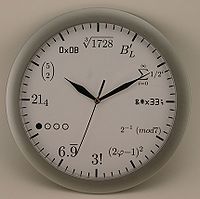Course:MATH103/Archive/2010-2011/207/Lectures/Lecture20
| Faculty of Science Department of Mathematics | |
|---|---|

| |
| Course Pages | |
| Course Policies | |
| Math Solvers | |
| Exams | |
| Quizzes | |
| Assignments | |
| Lectures | |
Lecture 20
Readings For This Lecture
- Chapter 8, pages 171 to 176
Summary
Group 1: Add a summary of the lecture in this space. Include examples, discussion, and links to external sources, if desired.
Exercises
1. If is a probability density distribution on then its “First moment” , is just its mean,
and its “Second moment” is defined by
.
We also define the variance, , and standard deviation, , as follows: and . Use these definitions to compute the mean, variance, and standard deviation of the probability density functions
.
2. Use these definitions to compute the mean, variance, and standard deviation of the following probability density function
.
3. Consider the function , which is given by
.
Find the variance and standard deviation of .
4. The function
is a probability density function for . Determine the constant . Find the zeroth, the first, and the second moments of this probability distribution.
5. Consider the Normal (or Gaussian) distribution function given by
,
and suppose you are told (since it is not easy to calculate) that
.
What value of the constant should be used to make this function represent a probability density distribution? This is called the Standard Normal distribution. Show that the mean and median are both 0. Show that the variance and the standard deviation are both 1. Note that this problem involves calculating improper integrals.

![{\displaystyle [a,b]}](https://wiki.ubc.ca/api/rest_v1/media/math/render/svg/9c4b788fc5c637e26ee98b45f89a5c08c85f7935)

















